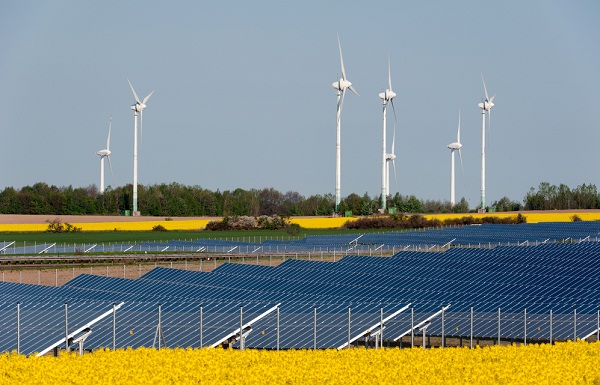Renewable energy advocates have long argued that subsidies for wind, solar and other forms of clean power would lead to more deployments that would eventually drive down costs and allow renewables to be competitive with conventional, dirty energy (itself often subsidized).
It looks like they could be right – to an unexpected degree.

An analysis by financial advisory and asset management firm Lazard has found that the levelized cost of energy from wind power has plunged by more than 50 percent in the past four years.
“While many had anticipated significant declines in the cost of utility-scale solar PV, few anticipated these sorts of cost declines for wind technology,” the report said.
Wind isn’t the only clean energy technology making remarkable progress, according to the Lazard analysis. Solar is on a winning trend as well:
The current and anticipated costs of all forms of utility-scale solar PV continue to decline; the study estimates that the LCOE of leading technologies has fallen by more than 50 percent in the last four years. Utility-scale solar PV is a competitive source of peak energy as compared with conventional generation in many parts of the world, without any subsidies (appreciating the important qualitative differences related to dispatch characteristics and other factors).
The cost declines for renewables are beginning to put pressure on conventional generation, at the very least to diversify:
Very large-scale conventional generation projects (e.g., IGCC, nuclear) face a number of challenges, including: large cost contingencies; absolute costs on a heroic scale; LCOEs which suffer by comparison to natural gas in many parts of the world; and policy uncertainty. Notwithstanding these issues, an integrated electric utility system in an advanced economy requires modern baseload generation, there is value in diversity of generation resources, and effective public policy dictates the need for organized resource planning in order to maximize the benefits of an integrated electric utility system for all constituencies.
That’s all at the utility-scale level. At the residential level, the picture is more complex, with a tangled web of subsidies helping drive the current fast growth of solar PV:
Residential-scale solar PV in the United States (and elsewhere) is benefiting from the concentration of multiple levels of federal tax subsidies, state-level tax subsidies, and/or feed-in tariffs. Currently, residential-scale solar PV remains expensive by comparison to utility-scale solar PV. Thus, an issue for consideration is whether these subsidies are distorting resource planning in a way that has externalities for the entire set of constituencies benefiting from an integrated electric utility system.